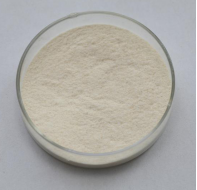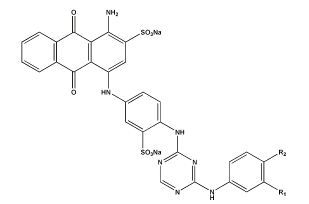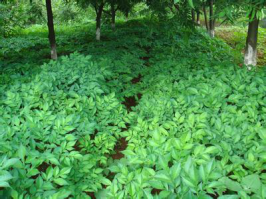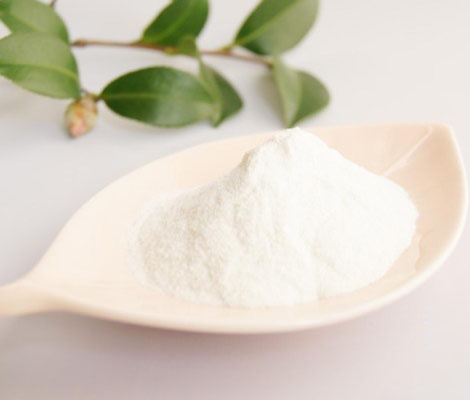2016 Super Lowest Price Konjac Gum Powder in Dominican Republic
2016 Super Lowest Price Konjac Gum Powder in Dominican Republic Detail:
[Latin Name] Amorphophallus konjac
[Plant Source] from China
[Specifications] Glucomannan85%-90%
[Appearance] White or cream-color powder
Plant Part Used:Root
[Particle size] 120 Mesh
[Loss on drying] ≤10.0%
[Heavy Metal] ≤10PPM
[Storage] Store in cool & dry area, keep away from the direct light and heat.
[Shelf life] 24 Months
[Package] Packed in paper-drums and two plastic-bags inside.
[Net weight] 25kgs/drum
[Introduction]
Konjac is a plant that is found in China, Japan and Indonesia. The plant is part of the genus Amorphophallus. Typically, it thrives in the warmer regions of Asia.
The extract of the Konjac root is referred to as Glucomannan. Glucomannan is a fiber-like substance traditionally used in food recipes, but now it is utilized as an alternative means of weight loss. Along with this benefit, konjac extract contains other benefits for the rest of the body as well.
The main material of the natural konjac gum is fresh konjac, which grow in virgin forest in Hubei area. We use advanced method to distill the KGM, aminophenol, Ca, Fe, Se which are good for health. Konjac is known as“ the seventh nutriment for human”.
Konjac Gum with its special water holiding capacity, stability, emulsibility, thickening property,suspension property and gel propery can especially adopted in food industry.
[Main Function]
1.It could reduce postprandial glycemia, blood cholesterol and blood pressure.
2.It could control appetite and reduce body weight.
3.It could increase insulin sensitivity.
4.It could control insulin resistant syndrome and diabetesII development.
5.It could reduce heart disease.
[Application]
1) Gelatinizer(jelly, pudding, Cheese, soft candy, jam );
2) Stabilizer(meat, beer);
3) Film Former(capsule, preservative)
4) Water-keeping agent( Baked Foodstuff );
5) Thickener (Konjac Noodles, Konjac Stick, Konjac Slice, Konjac Imitating Food stuff);
6) Adherence agent( Surimi );
7) Foam Stabilizer (ice cream, cream, beer)
Product detail pictures:

Related Product Guide:
It adheres to the tenet "Honest, industrious, enterprising, innovative" to develop new products constantly. It regards customers, success as its own success. Let us develop prosperous future hand in hand for 2016 Super Lowest Price Konjac Gum Powder in Dominican Republic , The product will supply to all over the world, such as: Lesotho, Guyana, belarus, Our products are mainly exported to Southeast Asia, the Middle East, North America and Europe. Our quality is surely guaranteed. If you are interested in any of our products or would like to discuss a custom order, please feel free to contact us. We are looking forward to forming successful business relationships with new clients around the world in the near future.
**WATCH IN HD**
Here are my thoughts on three blue roze beauty products…..details below…
Please excuse if I have seem to have no energy….had a very tiresome week!
www.BlueRozeBeauty.com
Cocoa coffee rhassoul hair mask – $14.99
- Ingredients: distilled water infused w/burdock root, alma, and bhrami, cocoa butter, coffee butter, sweet almond infused w/lavendar, unrefined avocado oil, btms, cetyl alcohol, australian pink clay, rhassoul clay, pathenol, germall plus, and fragrance.
Okra curl cream – $13.99
- Ingredients: water, aqueous extract of okra, walnut oil, wheat germ oil, illipe butter, manuka honey, green tea extract, fragrance (phthalate free), vitamin e, preservative (paraben free)
Manuka honey moisturizing conditioner – $14.00
-Ingredients: aqua, apple hyrdrosol, pumpkin seed oil, behentrimonium methosulfate, cetyl alcohol, butylene glycol, orange butter, macadamia oil, manuka honey, honeyquat, panthenol, guava fruit extract, & preservative (paraben free)
__________________________
Today’s Hair
~Wash N go styled with Tree Naturals Leave in conditioner , Tree Naturals whipped curl creme and Lia Naturals mango butter….
HAVE BETTER SEX: FOODS TO POWER YOUR MAN’S PENIS
How to increase SEX POWER in Men by Food Natural healthy stamina without medicine in English
Keeping up a healthy sex life has just as much to do with your desire for each other as it has to do with your diet.
Yes, it’s true! We already revealed which foods you can be eating for a healthy vagina (and healthy foods for a higher sex drive), but this week we’re taking a different approach. If you’re looking to increase your man’s libido, strengthen his sperm, and generally have a better time in the sack, start incorporating these 25 foods to power your man’s penis into his daily routine. Before you know it, he’ll be treating you to something a little special,
Avocado
Who doesn’t love avocados? They make it onto almost every “foods for better sex” list out there thanks to the natural fat that’s great for ener
The supplier cooperation attitude is very good, encountered various problems, always willing to cooperate with us, to us as the real God.










